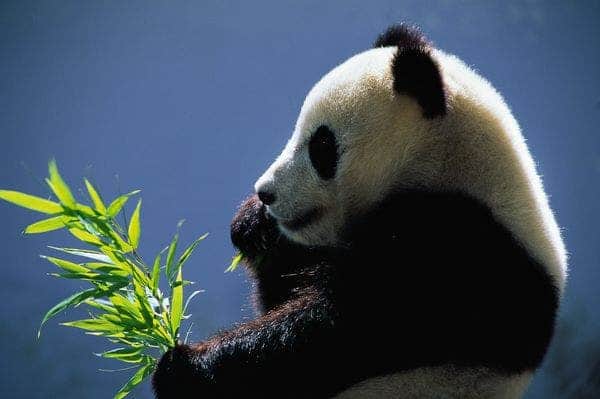
The same organisms that make pandas effective at digesting bamboo may help turn plant waste into biofuels, according to researchers. (c) Keren Su, Corbis
Biofuels are very ‘hot’ at the moment, as they’ve started to gain traction. Production as increased about 400% since 2000, and that’s a good thing. Right? After all, anything that can replace fossil fuels is a better option. Well, not necessarily. A while ago, I wrote a piece for ZME Science in which listed some of reason why biofuels aren’t that ‘green’ as most people would like to think. In short, unsustainable biofuel production can be hazardous to the environment creating deforestation, erosion, loss of biodiversity, and impact on water resources. People shouldn’t forget that biofuels produce greenhouse gas emissions as well, albeit not in the same degree as fossil hydrocarbons.
Another important downside to biofuel production is that an important chunk of them are made from food crops, affecting food supply. For instance, ethanol made from corn is the most common alternative fuel in the U.S. Engineers tried developing fuels from non-edible corn stalks, corn cobs, and other plant material not meant for food production, however these require special processing to breakdown their tough cellulose fibers. Typically this translates in an energy intensive process that requires high temperature and pressure. It’s simply not feasible. Not impossible, though.
Scientists at Mississippi State University, led by Ashli Brown, think they may have found a method to work-around the energy intensive process and derive biofuels from non-edible crops much easier. And they have two of Memphis Zoo’s giant pandas to thank: Ya Ya and Le Le. The secret lies in their super panda feces.
“The giant pandas are contributing their feces,” explained Ashli Brown, a biochemist at Mississippi State University who heads the research. “We have discovered microbes in panda feces might actually be a solution to the search for sustainable new sources of energy. It’s amazing that here we have an endangered species that’s almost gone from the planet, yet there’s still so much we have yet to learn from it.”
Pandas’ diet mainly consists of bamboo and their small intestinal tract is perfectly adapted to digest them. Since bamboo is similar to the tough cellulose fibers non-edible crops have been given scientists so much headaches, the Mississipi researchers were on to something. Closer inspection showed 40 microbes living in the guts of the giant pandas with unusually potent enzymes.
“The time from eating to defecation is comparatively short in the panda, so their microbes have to be very efficient to get nutritional value out of the bamboo,” Brown notes. “And efficiency is key when it comes to biofuel production – that’s why we focused on the microbes in the giant panda.”
In addition to identifying bacteria that break down lignocellulose into simple sugars, the researchers also found bacteria that can take those sugars and transform them into oils and fats – which could be used for biodiesel production. Brown said that either the bacteria themselves or the enzymes in the bacteria could be used in the production of biofuels.
“These studies also help us learn more about this endangered animal’s digestive system and the microbes that live in it,” said Brown. “Understanding the relationships between the microbes and the pandas, as well as how they get their energy and nutrition, is extremely important… as fewer than 2,500 giant pandas are left in the wild and only 200 are in captivity.”
Next, the researchers have to work on a way to use these bacteria and enzymes themselves to produce biofuels in the lab.
via Nat Geographic









